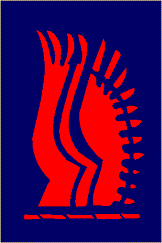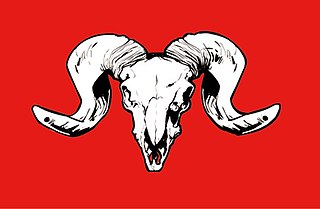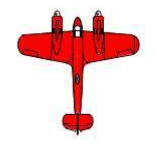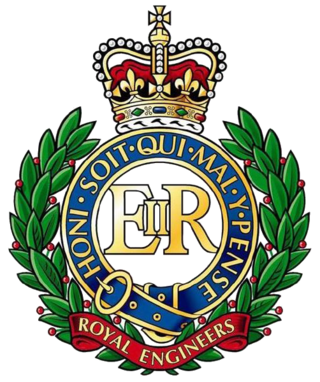
I Corps was an army corps in existence as an active formation in the British Army for most of the 80 years from its creation in the First World War until the end of the Cold War, longer than any other corps. It had a short-lived precursor during the Waterloo Campaign. It served as the operational component of the British Army of the Rhine during the Cold War, and was tasked with defending West Germany.

The Royal Corps of Signals is one of the combat support arms of the British Army. Signals units are among the first into action, providing the battlefield communications and information systems essential to all operations. Royal Signals units provide the full telecommunications infrastructure for the Army wherever they operate in the world. The Corps has its own engineers, logistics experts and systems operators to run radio and area networks in the field. It is responsible for installing, maintaining and operating all types of telecommunications equipment and information systems, providing command support to commanders and their headquarters, and conducting electronic warfare against enemy communications.

The 1st Armoured Infantry Brigade was an infantry brigade of the British Army with a long history including service during both the First and the Second World Wars. It was based at Tidworth Camp. Previously, it has been designated 1st (Guards) Brigade, 1st Infantry Brigade, 1st Mechanised Brigade, and under the initial Army 2020 reforms assumed the title of 1st Armoured Infantry Brigade. Under the Future Soldier programme, the brigade merged with the 1st Artillery Brigade to form the 1st Deep Recce Strike Brigade Combat Team.

The 24th Infantry Brigade was an infantry brigade of the British Army from the First World War. It was reraised during the Second World War, as the 24th Infantry Brigade (Guards). During various designations, the brigade was active throughout the Cold War and existed until 1999, when it was merged with the 5 Airborne Brigade to become 16 Air Assault Brigade.

The 30th Armoured Brigade was an armoured formation of the British Army that served in Western Europe Campaign as part of the 79th Armoured Division. After the reformation of the Territorial Army in 1947, the brigade was re-created within the Territorials based in Scotland and finally disbanded by 1967.

The 11th Security Force Assistance Brigade is a brigade of the British Army which is intended to train and assist foreign forces. In 2021, under the Future Army changes, the brigade was redesignated, formerly being the 11th Infantry Brigade & HQ South East. Prior to the Army 2020 changes in 2013, the brigade was temporarily activated for deployment to Afghanistan. Originally formed in the Second Boer War, the brigade was engaged during both World Wars.

The 11th Signal and West Midlands Brigade is a signal formation of the British Army's 3rd UK Division. Its headquarters is located at Venning Barracks, in Donnington in Shropshire.

The 14th Signal Regiment (Electronic Warfare) is a part of the British Army's Royal Corps of Signals. The regiment's role is to provide electronic warfare (EW) capability in support of deployed Land Commanders, in order to enable operations in the electronic battlespace. It is the only British Army regiment capable of conducting sustainable electronic warfare in support of national operations worldwide. The regiment is currently based at Cawdor Barracks, on the site of the former RAF Brawdy, near Haverfordwest, in South Wales.

The 1st Artillery Brigade was a support formation of the British Army from 1961-77 and from 1997. Part of the 3rd Division, it oversaw all army close support artillery and deep fires units. Under the Future Soldier programme, the brigade merged with 1st Armoured Infantry Brigade to form 1st Deep Reconnaissance Strike Brigade Combat Team.

8th Engineer Brigade is an engineering support formation of the British Army, which forms part of 1st Division.

The page contains the current structure of the British Army. The British Army is currently being reorganised to the Future Soldier structure.
The following is a hierarchical outline for the structure of the British Army in 1989. The most authoritative source for this type of information available is Ministry of Defence, Master Order of Battle, and United Kingdom Land Forces, HQ UKLF, UKLF ORBAT Review Action Plan, HQ UKLF, 1990.
This is a list of units of the British Army's Royal Corps of Signals.

The 7th Signal Regiment was a regiment of the Royal Corps of Signals within the British Army. The unit and its predecessors supported 1st (British) Corps from 1911 until the end of the Cold War. Afterwards the regiment supported the Allied Rapid Reaction Corps until its disbandment in 2012.
3rd (UK) Division Signal Regiment is a regiment of the Royal Corps of Signals within the British Army. The regiment is based at Bulford.

21 Signal Regiment is a signal regiment of the Royal Corps of Signals within the British Army. The regiment was, until the initial Army 2020 reforms, the only signal regiment to support the Royal Air Force.
13 Signal Regiment is a signal regiment of the Royal Corps of Signals within the British Army.

The 15th Signal Regiment is military communications unit of the British Army's Royal Corps of Signals.

The 1st Field Engineer Squadron is an engineer unit of the Corps of Royal Engineers within the British Army. The squadron was first formed in 1914 following the mobilisation of the Army for the First World War. The squadron later supported The Cavalry Division and the first British Army of the Rhine. The squadron later saw service in the Second World War and today supports the 21st Engineer Regiment of the new 1st Strike Brigade.

7th Signal Group is a military communications formation of the British Army's Royal Corps of Signals, currently subordinated to 3rd (UK) Division. The group oversees the close-support signal units of the corps tasked with supporting 3rd (UK) Division.














